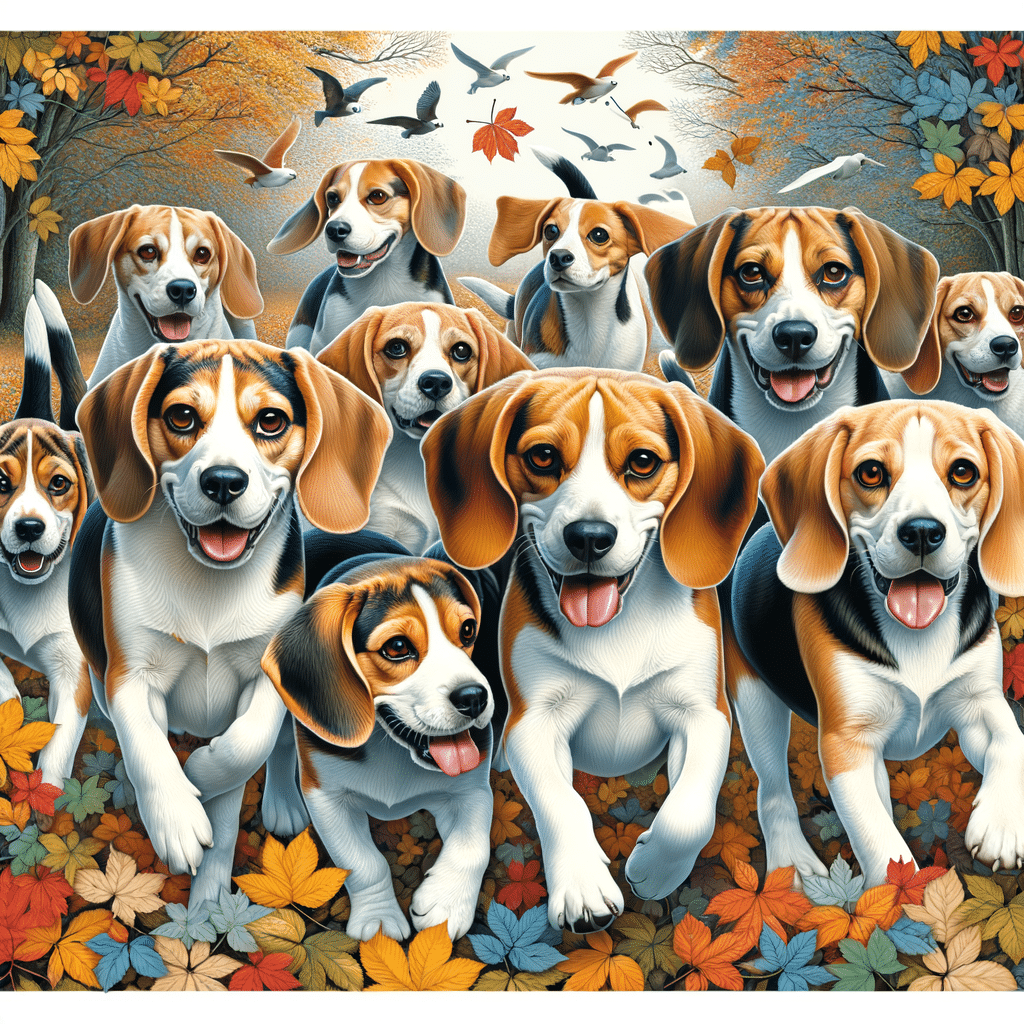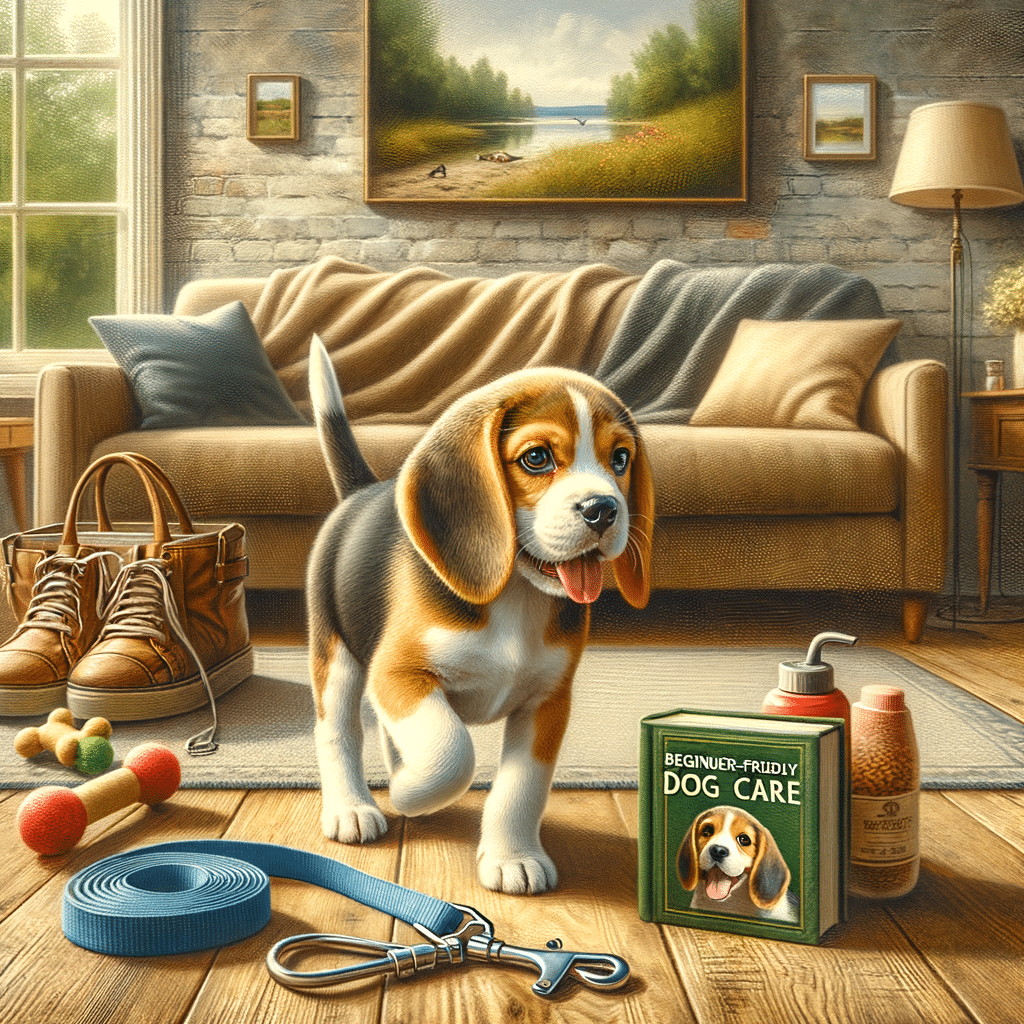If you are thinking about adding a beagle to your family, you may wonder, “Do beagles shed?” As a medium-shedding dog breed, beagles shed throughout the year, with increased shedding typically happening during spring and fall when transitioning their coats. Their short, dense fur can give the impression that they shed less than longer-haired breeds, but beagle owners will attest to the regular presence of loose hair around the home.
In This Article
Maintaining a beagle’s coat involves regular grooming to manage their shedding. Regular brushing helps to minimize the amount of hair that ends up on your floors and furniture. While beagles are often chosen as family pets due to their size and temperament, potential owners should know that, like all dogs, they require ongoing care, including shedding management. It is important to consider if you have allergies or sensitivities to dog hair.
Highlights
- Beagles have a regular shedding season, usually twice a year.
- Effective grooming reduces shedding impact at home.
- Beagle shedding is manageable with routine care.
Understanding Beagle Shedding
Beagles shed moderately throughout the year, with increased shedding in certain seasons. This process is natural and varies depending on several factors, including the beagle’s health and care.
Shedding Patterns and Seasons
Beagles experience a shedding cycle that fluctuates with the seasons. They shed moderately year-round but more heavily during the shedding seasons, typically during spring and fall. This is when they transition from their winter coat to summer coat and vice versa, making seasonal shedding an important aspect of their natural cycle.
Coat Characteristics
Beagles have a dense double coat consisting of a soft undercoat and a harder top coat. The coat color often includes tri-color, with shades that may influence the visibility of shedding. However, coat length and density are more significant in shedding than color. Their short hair can be deceptive, leading some to underestimate the amount they shed.
Factors Influencing Shedding
Several factors can affect beagle shedding. Health is a major factor; conditions like hypothyroidism can cause irregular shedding. Nutrition and diet play roles in maintaining a healthy coat, and poor nutrition can lead to excessive shedding. Stress, hormones, and genetics also contribute to the normal shedding cycle.
Shedding and Allergies
Shedding in beagles leads to loose hair and dander in the environment, common allergens for people with dog allergies. While no breed is truly hypoallergenic, the extent of shedding can more prominently affect those with sensitive skin or allergies, making it something to consider if you are looking to bring a beagle into your home.
Beagle Grooming Essentials
Beagle grooming is essential to managing shedding, maintaining body temperature, and preventing skin conditions. Proper grooming tools, techniques, products, and dietary considerations play a significant role in a beagle’s coat health.
Effective Grooming Tools
Beagles benefit from using specific tools that tackle their shedding effectively without harming their skin.
Tools:
- Slicker brush: Ideal for removing tangles and mats.
- De-shedding tool: Used to thin out the undercoat during shedding seasons. Popular de-shedding tools include the FURminator.
- Fine-toothed comb: Helps to remove any remaining tangles and debris after brushing.
Grooming Techniques and Frequency
A consistent grooming routine is essential for beagles. Regular brushing, at least three times a week, helps remove loose fur and distribute natural skin oils.
- Brushing: Use smooth, gentle strokes with the slicker brush, followed by the de-shedding tool, especially during peak shedding seasons.
- Bathing: Beagles should not be bathed too frequently as it may dry out their skin. Aim for once every 4-6 weeks or as needed.
Choosing the Right Bathing Products
The correct bathing products are critical for maintaining a beagle’s skin and coat health.
Recommended types of shampoo include:
- Oatmeal shampoo: Helps soothe sensitive skin.
- Hypoallergenic shampoo: Good for Beagles with allergies.
- Quality dog shampoo: Ensures the pH balance of the skin is maintained.
Avoid :
- Human shampoo: It can disrupt the pH balance and damage a dog’s skin.
Dietary Influence on Coat Health
Nutrition plays a vital role in skin and coat health.
Diet:
- Provide a high-quality diet rich in essential nutrients.
- Include supplements such as omega-3 fatty acids to boost skin health and reduce shedding.
Hydration:
- Ensure your beagle has constant access to fresh water to support hydration and coat condition.
Managing Shedding at Home
Maintaining a clean home with a beagle requires consistency and the right tools to combat moderate shedding. Pet owners can effectively manage their beagle’s natural hair loss by establishing regular cleaning habits and understanding the impact on everyday living.
Cleaning Routines and Tools
Consistency is vital when it comes to managing beagle shedding. Regularly brushing your beagle can significantly reduce the amount of hair on your floors and furniture. Brushing them every two or three days and more frequently during shedding seasons is recommended. This helps remove loose fur and distributes skin oils that can help improve coat health.
An array of cleaning tools is essential in a beagle owner’s arsenal to control shedding:
- Lint rollers: Indispensable for quick touch-ups on clothes and soft furnishings.
- High-efficiency vacuum cleaners: Beneficial for removing pet hair from all types of flooring.
- Robotic vacuums: Can help maintain cleanliness daily.
- Upholstery attachments: Make cleaning sofas and chairs where beagles may rest easier.
Impact on Household Living
Beagles, initially bred as hunting dogs and now popular family pets, shed moderately throughout the year. Their fur can find its way onto almost every surface in a home, from sofas to clothes. Although beagles are not known for health issues such as alopecia, their natural shedding can still affect household cleanliness.
To adapt, families often establish specific areas for their beagle to minimize hair spread, such as designated spots on the sofa or special dog beds. Furthermore, adopting strategies like daily sweeps of high-traffic areas and placing washable throws over furniture can greatly control the presence of beagle hair in a living space.
By acknowledging these aspects of cohabitating with beagles and implementing structured cleaning routines, owners can enjoy the company of their moderate shedders without undue stress over fur-related cleanliness.
When to Consult a Vet
A beagle owner needs to distinguish between normal shedding patterns and signs that may indicate health complications. Consulting a vet is crucial when shedding deviates from the norm and is accompanied by other symptoms.
Recognizing Abnormal Shedding
Abnormal shedding in beagles may present as excessive hair loss or bald patches (alopecia). It should raise concern if a beagle sheds more than usual, especially outside of typical shedding seasons. Excessive shedding can be evident by finding unusually large amounts of hair around the home or on the dog’s bedding. Another indicator is if the beagle’s coat appears significantly thinner or if there are areas of skin inflammation or visible irritation.
Signs to look out for :
- Excess hair being shed
- Presence of bald spots
- Skin redness or irritation
Shedding Linked to Beagle Health Issues
Excessive shedding can be a symptom of underlying health issues. Skin infections, parasites (like fleas or mites), improper nutrition, allergies, or metabolic disorders can all lead to atypical shedding. Skin conditions can also cause itchiness and discomfort, which the dog might respond to by scratching excessively, thus contributing to hair loss.
Health issues that can affect shedding:
- Skin infections: Symptoms include hair loss and possibly a discharge or an unpleasant odor.
- Parasites: The presence of fleas, ticks, or mites can lead to shedding and skin damage.
- Nutrition: Inadequate or imbalanced diet can manifest in poor coat condition and shedding.
- Disease: More serious ailments like thyroid disorders or adrenal problems can cause coat changes.
If you suspect one of these conditions or notice other symptoms, such as changes in appetite, lethargy, or behavior, schedule a consultation with a veterinarian. They can conduct a physical examination, possibly including blood tests, to pinpoint the cause of the excessive shedding and recommend the needed treatment.
Frequently Asked Questions
Beagle owners often have questions about their pet’s shedding tendencies. Below are answers to some common questions.
How much shedding can be expected from a beagle?
Beagles are moderate shedders. They shed consistently throughout the year, with increased shedding during the spring and autumn seasons.
What are ways to manage shedding in beagles?
Regular brushing, a balanced diet, and maintaining a healthy skin and coat through appropriate care are effective ways to manage a beagle’s shedding.
Does shedding in beagles vary with seasons?
Yes, beagles typically shed more heavily during the changes of seasons, specifically before spring and winter, to adjust their coat’s density for temperature changes.
Compared to Labradors, do beagles shed less or more?
Beagles tend to shed as much as Labradors despite having shorter hair. Their shedding is often underestimated due to their coat length.
Can people with dog allergies usually tolerate beagle’s shedding?
Due to their moderate shedding, beagles may not be the most suitable breed for people with severe dog allergies.
What are the typical reasons for excessive shedding in beagles?
Excessive shedding in beagles can be due to various factors, including poor nutrition, stress, skin problems, or allergies, and may require a veterinarian’s attention.






